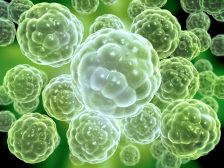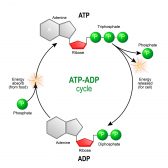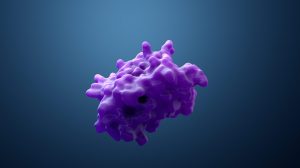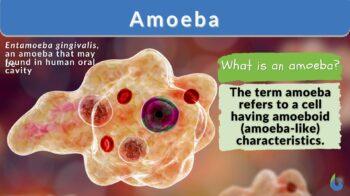
Amoeba
n., plural: amoebae
or amoebas
[əˈmiːbə]
Definition: protist or a cell that display an amoeboid movement and other amoeba-like characteristics
Table of Contents
Amoeba Definition
The term amoeba, also spelled ameba, describes any cell exhibiting amoeboid movement. Amoeboid movement is characterized by the formation of pseudopods that can be extended and retracted, enabling the cell to move. In a stricter biological definition, ‘amoeba’ specifically refers to the species belonging to the genus Amoeba. This genus is a member of the family Amoebidae, class Tubulinea, domain Eucarya. The species of this genus (e.g. Amoeba proteus) are referred to as true amoeba. They are single-celled, free-living, and eukaryotic protists.
An amoeboid movement is one in which the cell forms pseudopods that can be extended and retracted as the cell moves. In this regard, amoebas include cells that are amoeba-like, such as cells of certain fungi, algae, and animals. They are also referred to as amoeboid to allude to their amoeba-like appearance and amoeboid movement.
Definition in Protistology
In protistology, amoeba specifically pertains to the genus Amoeba (true amoeba) of the family Amoebidae, class Tubulinea. This genus is comprised of single-celled protists. They are free-living and feed on bacteria, other protists, or detritus. They are characterized by their protoplasmic movement and cytoplasmic projections called pseudopodia (false feet).
One of the best-known examples is the giant amoeba, Amoeba proteus. Some references though consider amoeba as any type of cell with the ability to alter cell shape and form pseudopods that can be extended and retracted. These organisms were initially classified under the subphylum Sarcodina. However, with modern molecular phylogenetic analyses, the subphylum was found to be polyphyletic rather than monophyletic. Members of this taxonomic group did not come from a common ancestor and therefore cannot be considered as a single group. As such, the use of the term amoeba includes those that have amoeboid (amoeba-like) characteristics.
Examples of medically-notable amoeboid protists are Entamoeba histolytica and Naegleria fowleri.
Etymology: the term amoeba comes from Greek amoibe, meaning “to change”. This may be due to its shape, which is constantly changing.
Variants: amœba; ameba.
Watch this vid of Amoeba eating Paremecium:
Note it!
The eating process of the amoeba can be likened to a human phagocyte executing the phagocytosis of a foreign body.
Characteristics of Amoeba
- Irregular cell shape. The ability to constantly alter the cell shape is one of the major Amoeba characteristics.
- Pseudopods for locomotion. Inside the cell are cytoplasmic microfilaments that enable the formation of temporary cytoplasmic projections called pseudopodia (or pseudopods). The function of pseudopodia in amoeba is locomotion. In essence, it forms in front of the cell and pulls it forward in a sliding movement. Thus, the amoeba cell seems to be crawling on a substrate with its pseudopod. The amoeba cell may form a single dominant pseudopod, especially when crawling, or several pseudopods at once when they are freely floating.
- Pseudopods and ectoplasmic tubes for feeding. Another function of pseudopodia is for food capturing and ingestion. The amoeba cell surrounds its food (e.g. bacteria, other protists, detritus) with its pseudopod. When food comes in contact with an amoeba cell, the ectoplasm forms a tube called an ectoplasmic tube, takes the food into it, and then converts it into a food vacuole. (1)
- Two protoplasmic layers. As for the amoeba structure, the cell has two distinct parts: the inner endoplasm and the outer ectoplasm. The differing consistencies of endoplasm and ectoplasm aid in the formation of pseudopods.
- Single nucleus. Typically, there is a single nucleus that contains most of the DNA.
- Contractile vacuole. Another prominent cytoplasmic structure is the contractile vacuole. The major function of the contractile vacuole in amoeba is osmoregulation. It regulates osmotic pressures within the cell. It does so by filling itself with excess cytoplasmic water (diastole). Then, it fuses with the cell membrane to release the content outside by a quick contraction (systole).
- Reproduction. Amoeba reproduction is by binary fission, a type of asexual reproduction. Sexual reproduction (e.g. by syngamy) seems to occur as well, particularly in certain Amoebozoans. (3) Although there is no direct observation that it occurs in amoebas, meiosis and genetic recombination were observed. (3, 4)
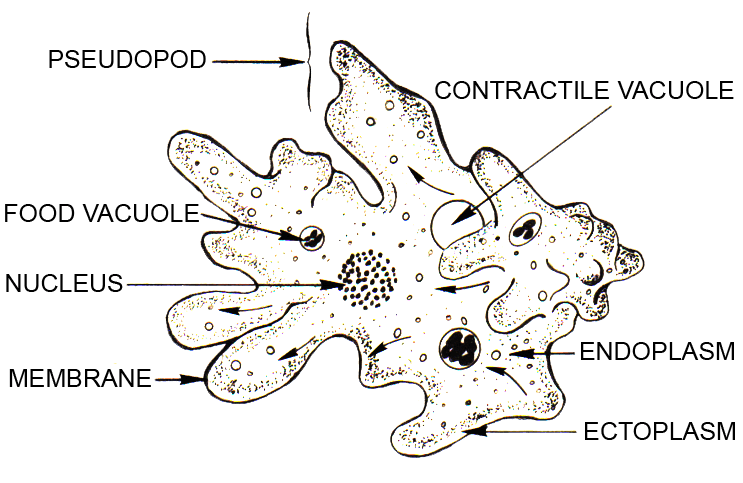
Classification
In the older classification system, Amoeba is classified under the subphylum Sarcodina, a taxonomic group within the phylum Sarcomastigophora. Members of this subphylum are characterized by being single-celled and their ability to move by protoplasmic flow or by pseudopod. However, molecular phylogenetic studies implicate that Sarcodina is not a monophyletic group, meaning its members do not have common descent, and as such cannot be considered as a single group. (5) Nonetheless, amoebas are still classified under the domain Eucarya, implicating that they are eukaryotes.
Examples
Free-living species of the Amoeba genus are found in freshwater and soil habitats. They are major predators of bacterial populations.(6) Amoeba proteus is an example of a free-living amoeba. It is a large protist as its length may reach up to 2 mm. It is non-pathogenic as there has been no known Amoeba proteus disease in humans and other animals.
Some amoeba-like protists, though, are opportunistic pathogens. Given the opportunity, they may live as a parasite inside a host and cause disease. One of the medically-important amoebae is Entamoeba histolytica. This species causes entamoebiasis and amebic dysentery to its human and other primate hosts. It forms a cyst that can be transmitted through the ingestion of infected water or food. When swallowed, the cyst will release the trophozoite in the digestive tract and become pathogenic. It causes flask-shaped ulcers, and eventually, bloody diarrhea. In certain instances, it migrates to the bloodstream, and subsequently, reaches other organs (e.g. liver) where they cause damage as well.
“Featuring… Naegleria fowleri, the brain-eating amoeba”
Naegleria fowleri is a species of Amoeba that lives in hot springs, warm freshwater lakes, and rivers. It can turn from a free-living state into a parasite when it enters the body of a host, e.g. humans. It enters through the nose and penetrates the nasal mucosa. Later, it migrates to the brain through the olfactory nerves. In the brain, it feeds on brain tissues, e.g. astrocytes and neurons, and thereby causes naegleriasis (or primary amoebic meningoencephalitis), which can be sudden, severe, and fatal to the host.
Take the Amoeba Biology Quiz!
References
- Biosystematics, Structure and Functions of Invertebrates. Retrieved from http://assets.vmou.ac.in/MZO01.pdf
- Alberts Eds.; et al. (2007). Molecular Biology of the Cell 5th Edition. New York: Garland Science. p. 1037.
- Lahr, D. J., Parfrey, L. W., Mitchell, E. A., Katz, L. A., & Lara, E. (July 2011). “The chastity of amoebae: re-evaluating evidence for sex in amoeboid organisms”. Proc. Biol. Sci. 278 (1715): 2083–6.
- Hofstatter, P. G., Brown, M. W., & Lahr, D. J. G. (November 2018). “Comparative Genomics Supports Sex and Meiosis in Diverse Amoebozoa”. Genome Biol Evol. 10 (11): 3118–3128.
- Pawlowski, J. (2008). The twilight of Sarcodina: a molecular perspective on the polyphyletic origin of amoeboid protists. Protistology, Band 5, S. 281–302. https://www.biologyonline.com/wp-content/uploads/attachments/pawlowski.pdf
- Rodríguez-Zaragoza, S. (1994). Ecology of free-living amoebae. Critical Reviews in Microbiology, 20(3), 225–241. https://doi.org/10.3109/10408419409114556
© Biology Online. Content provided and moderated by Biology Online Editors

